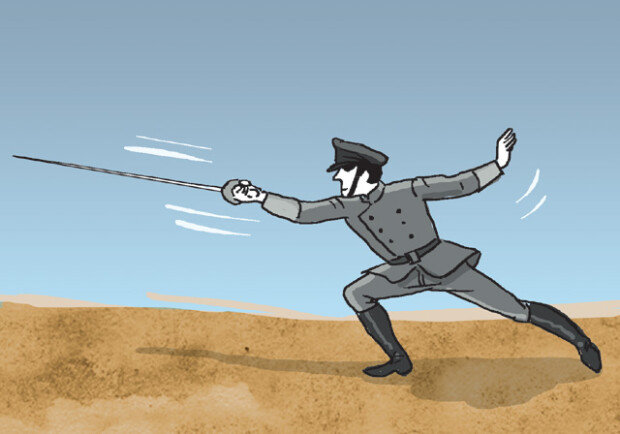Creating the new from the old
Creating the new from the old
Posted July. 21, 2020 07:45,
Updated July. 21, 2020 07:45

Blitzkrieg was a new method of warfare at the time of World War II. According to Liddell Hart, there were only about 20 generals who acknowledged the value of armored tactics before World War II.
Gen. George Patton, who was one of the U.S. leading generals, was born in 1885. His grandfather died in the American Civil War fighting for southern states. Patton grew up learning to ride a horse on his grandfather’s saddle and hearing stories of the cavalry from a Confederate army cavalry battalion commander, John Mosby. He became immersed in horse riding and fencing while attending a military academy and learned fencing from the best fencing instructor of the time when he went to France.
Patton was part of the good old cavalry. As an expert in sabers, he poured his energy into upgrading them when he was an officer. His focus was to replace the existing sword with a new sword he designed, called the Patton Saber. The Patton Saber was a long sharp sword designed for thrusting attacks as opposed to the standard slashing maneuver. Slashing maneuver was not effective and required soldiers to sit up whereas soldiers can thrust hunched on horseback. A long blade means they can attack enemies first with high precision. Most of all, the cut is a line while the thrust is a dot. The thrust is the most difficult attack to defend against.
The Patton Sword appeared in ceremonies only and never made it to real battles in the 20th century. Does this make his life as a cavalry soldier meaningless? Hunch down and target a dot to the best of your ability. Be bold when thrusting. One second determines the difference between a win and loss. All these lessons apply to blitzkrieg as well. Many generals were skeptical or afraid of blitzkrieg because they were neither confident about how effective thrusting and targeting dots could be nor willing to take the risk.
Fencing may be old-fashioned and outmoded in the 20th-century warfare. However, the principals of fencing are still valid. Wise people can tell the difference between these two and find universal truth from old practices.







